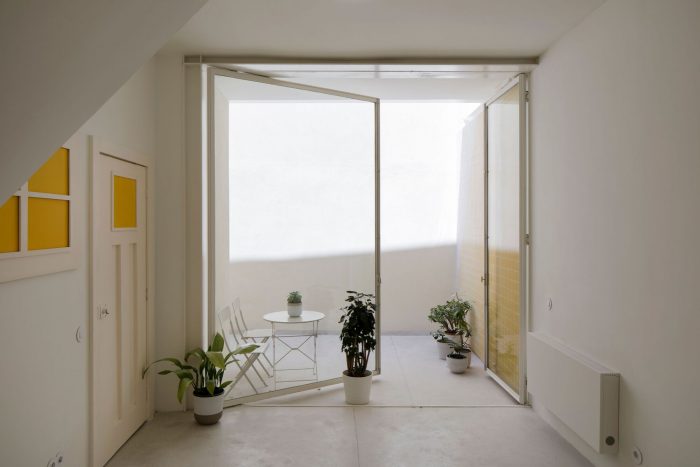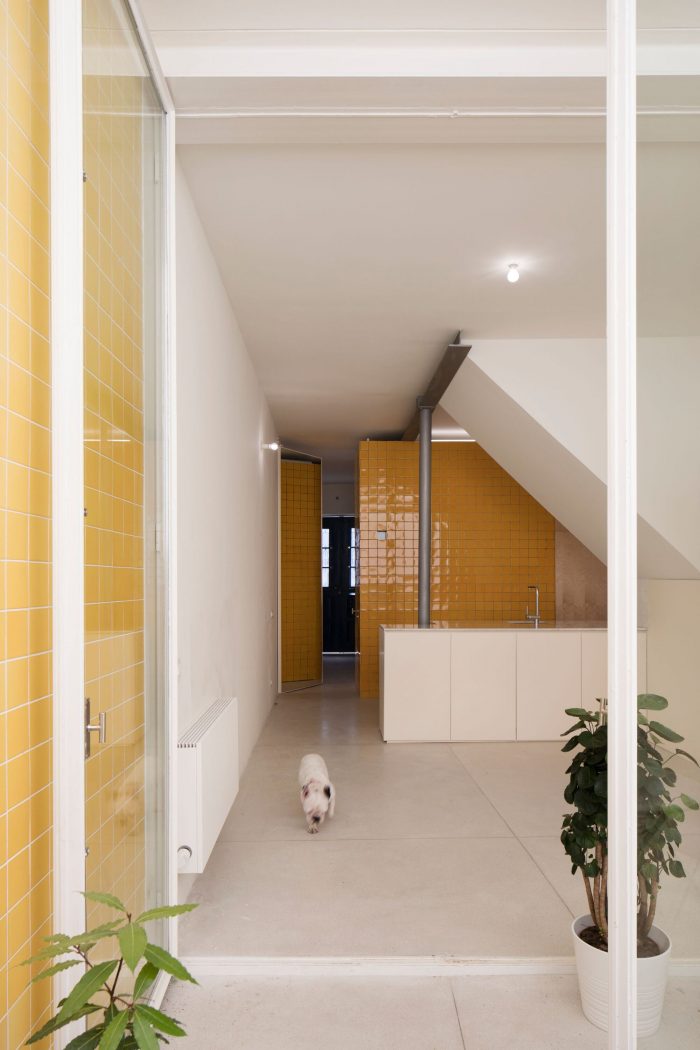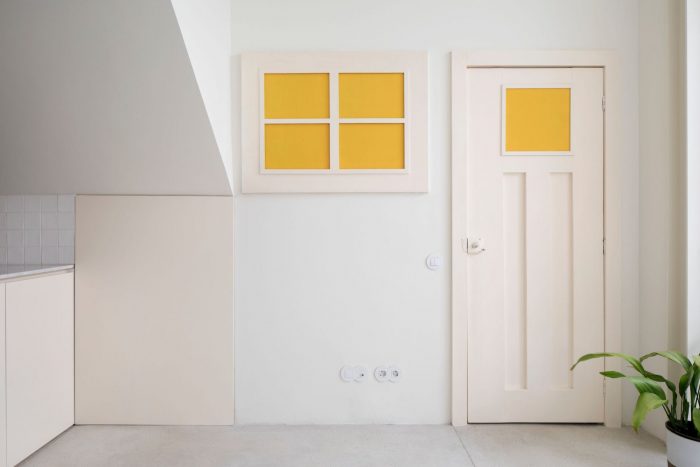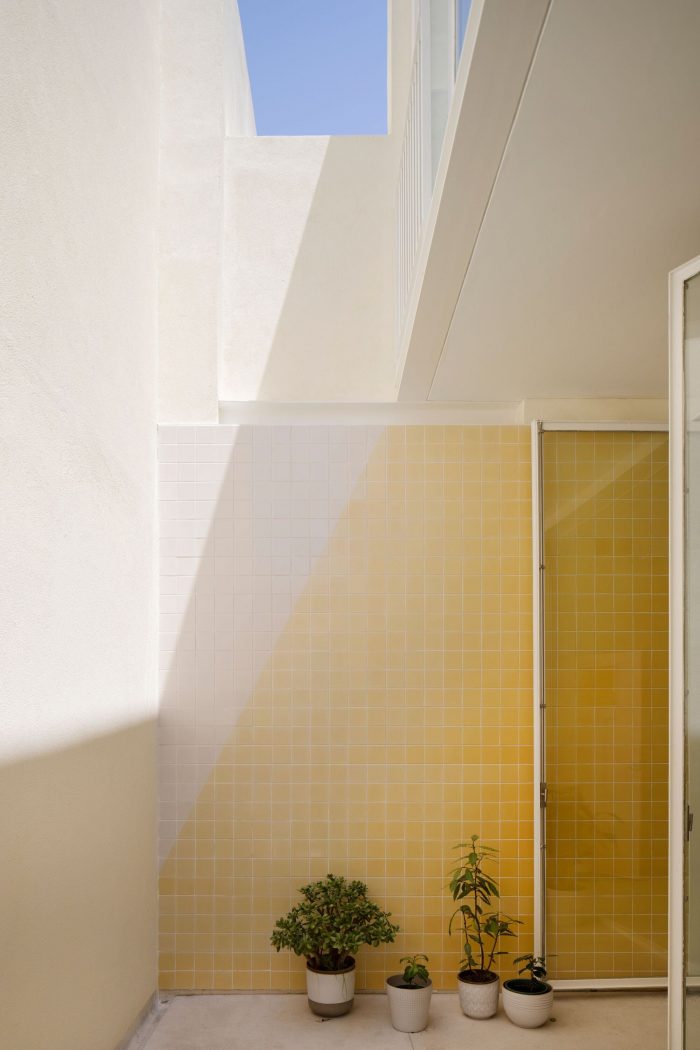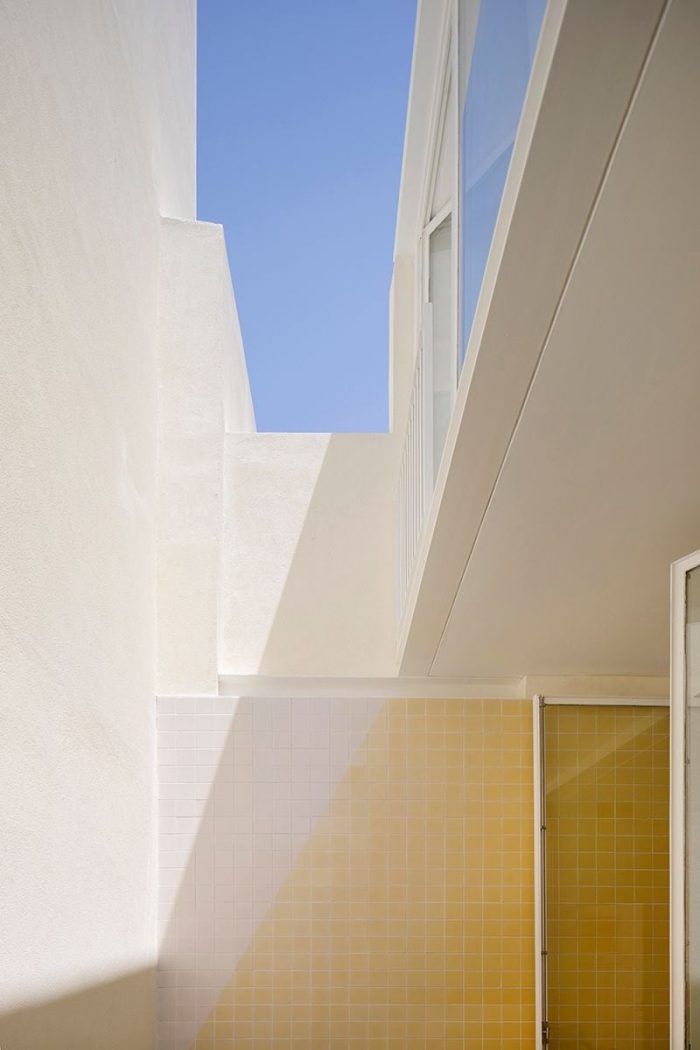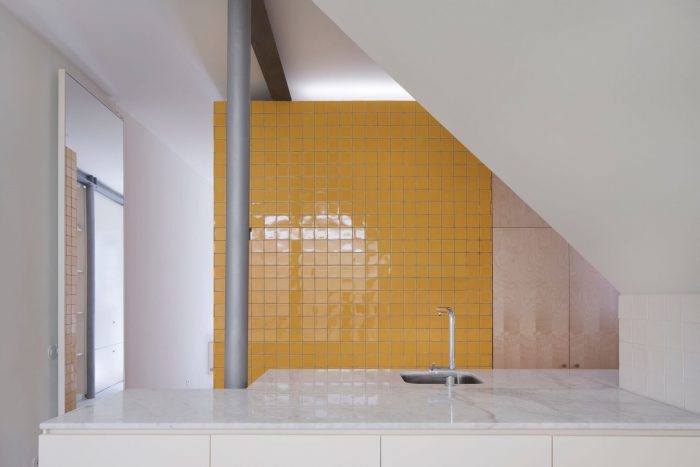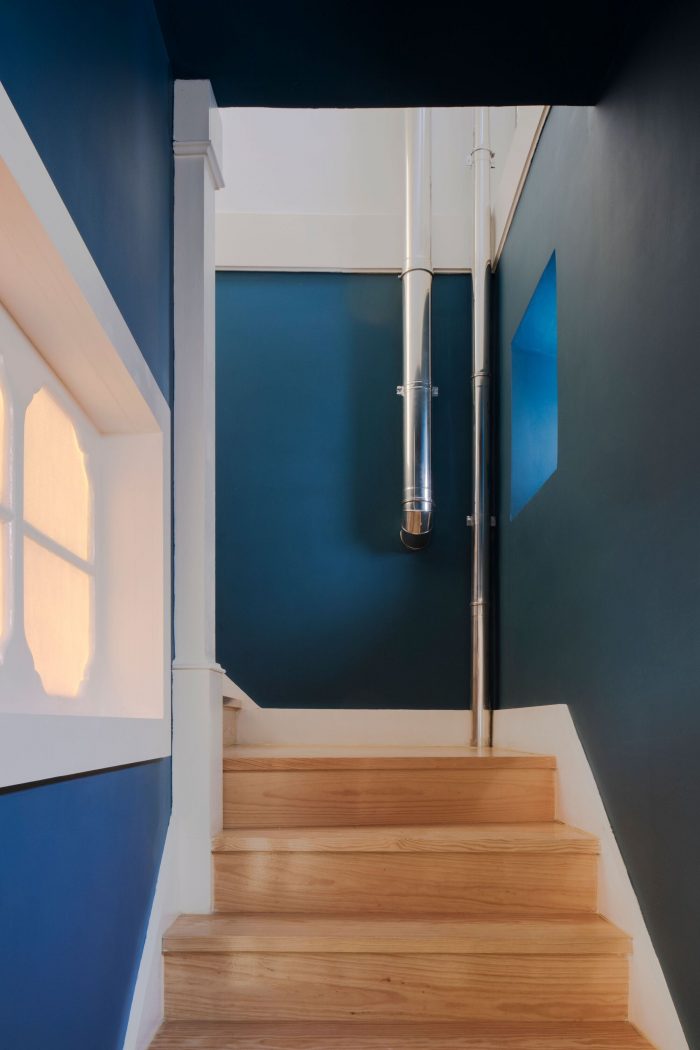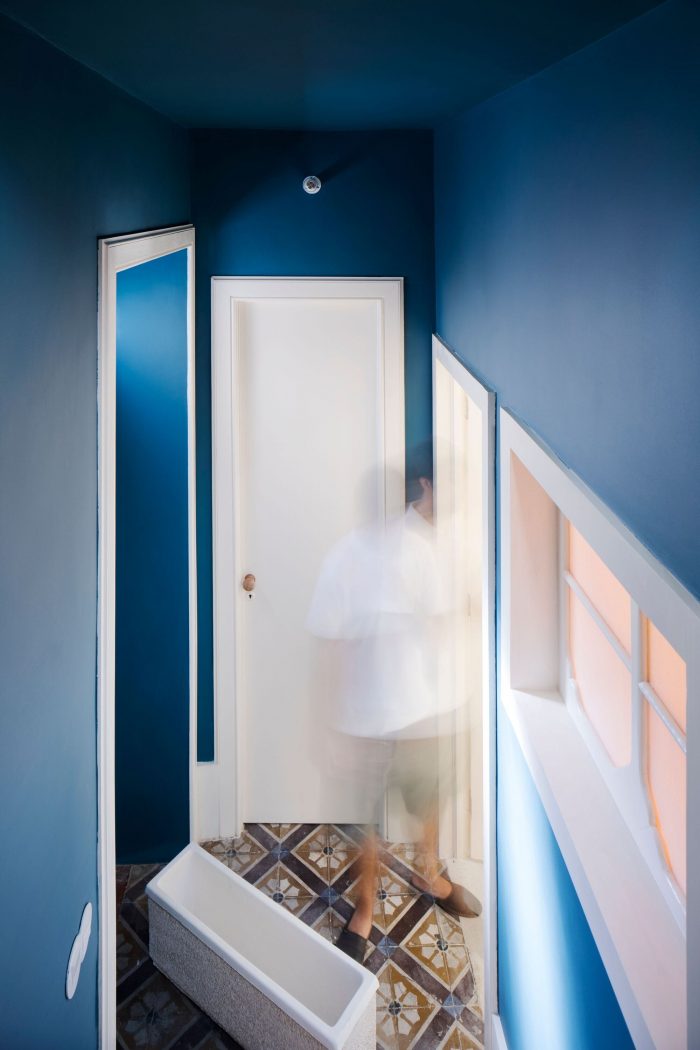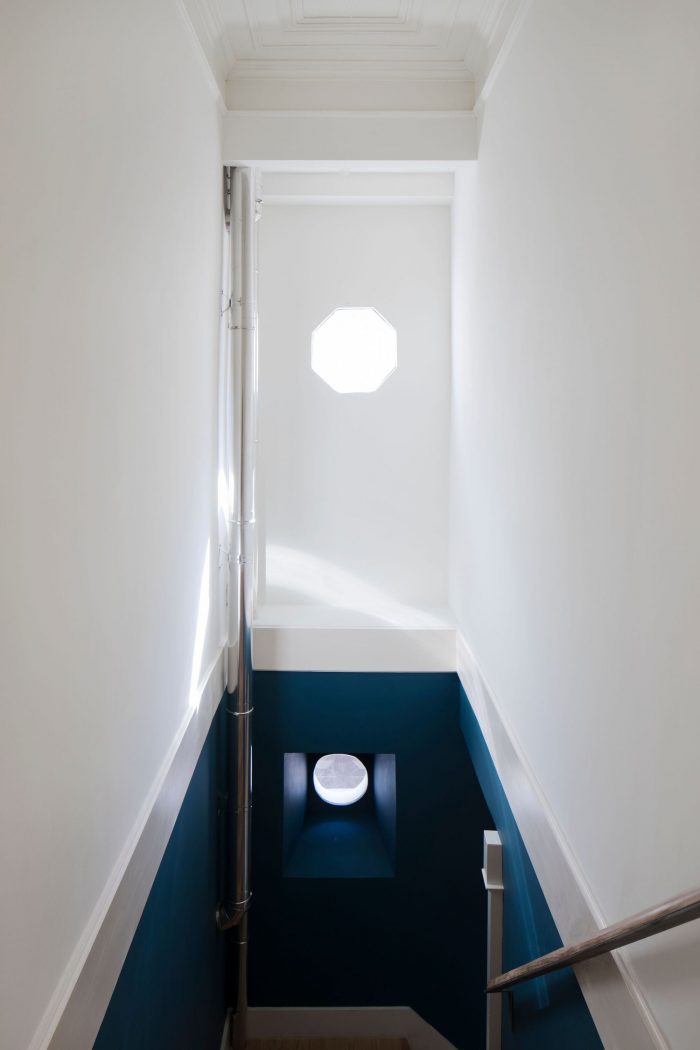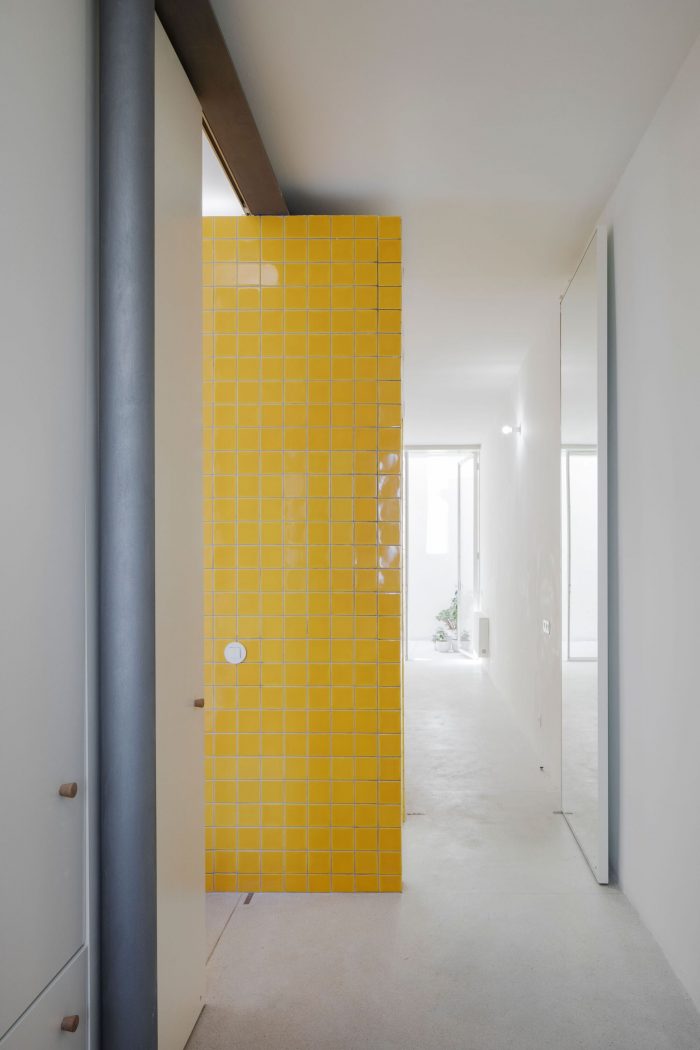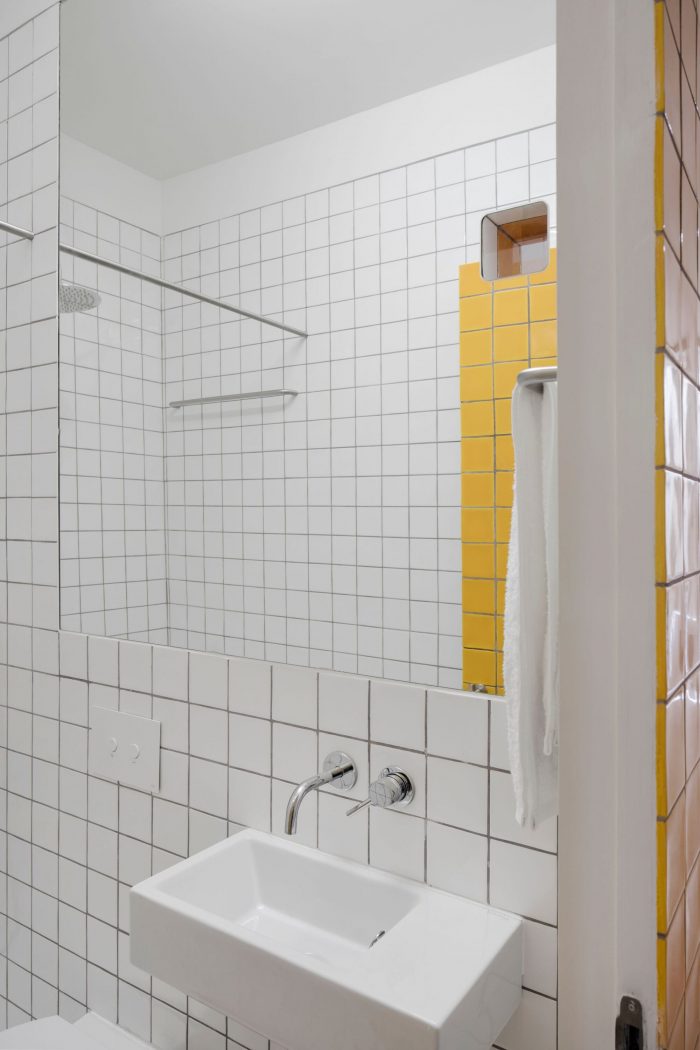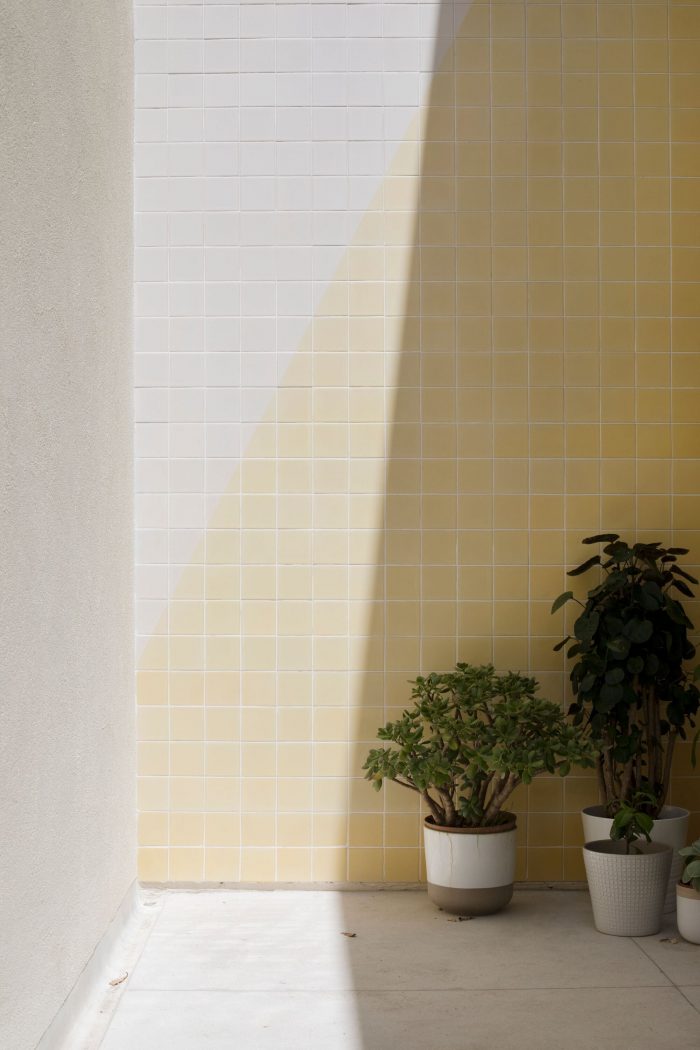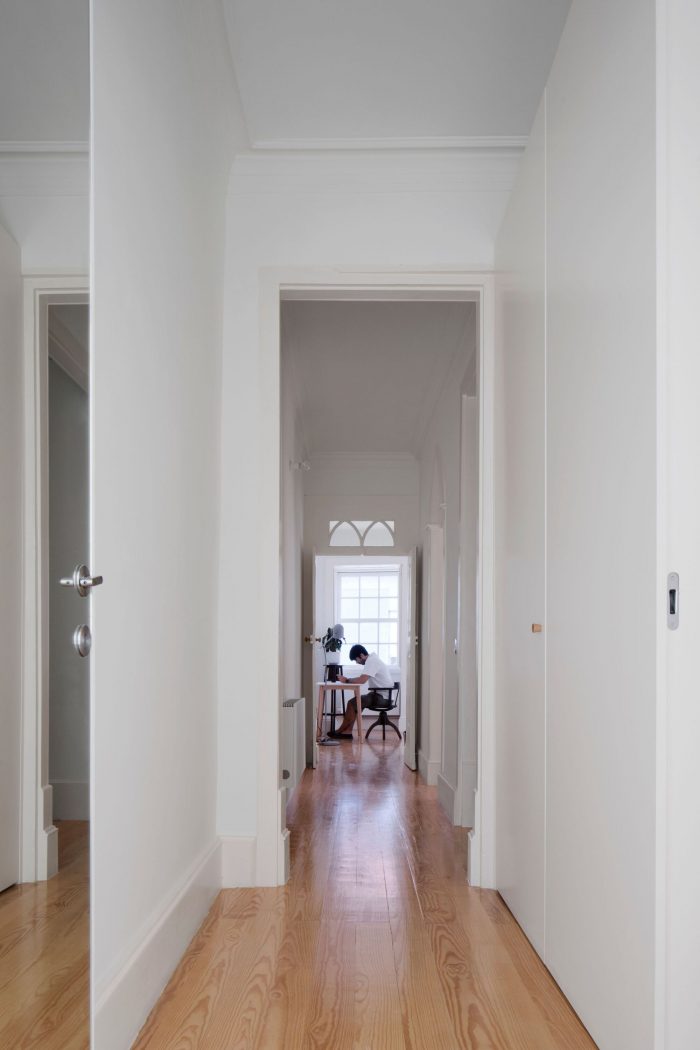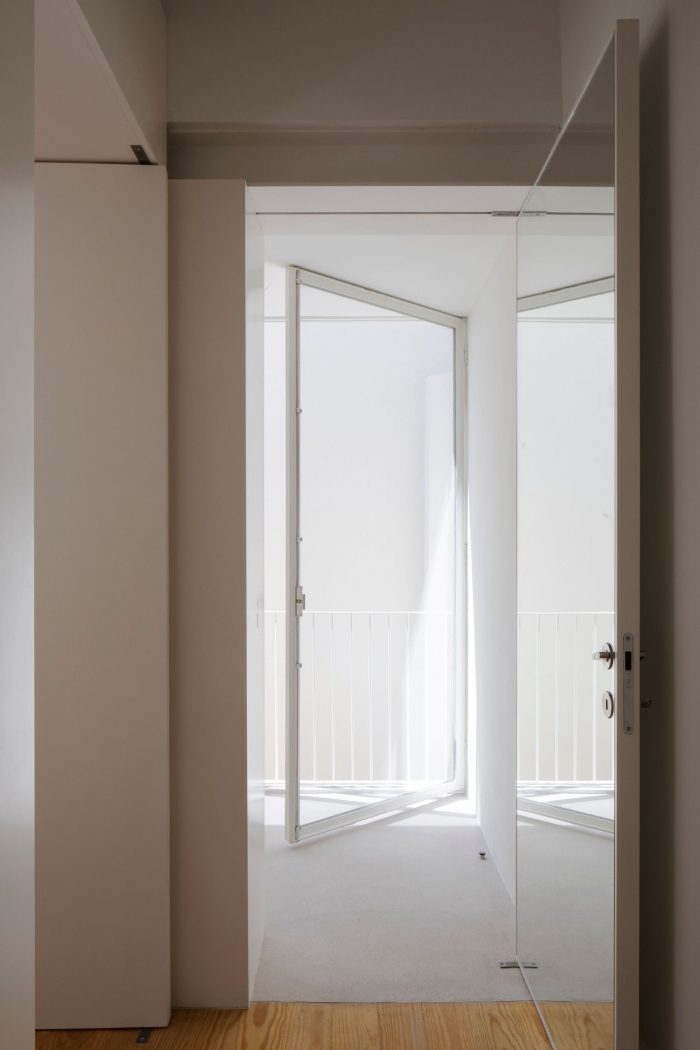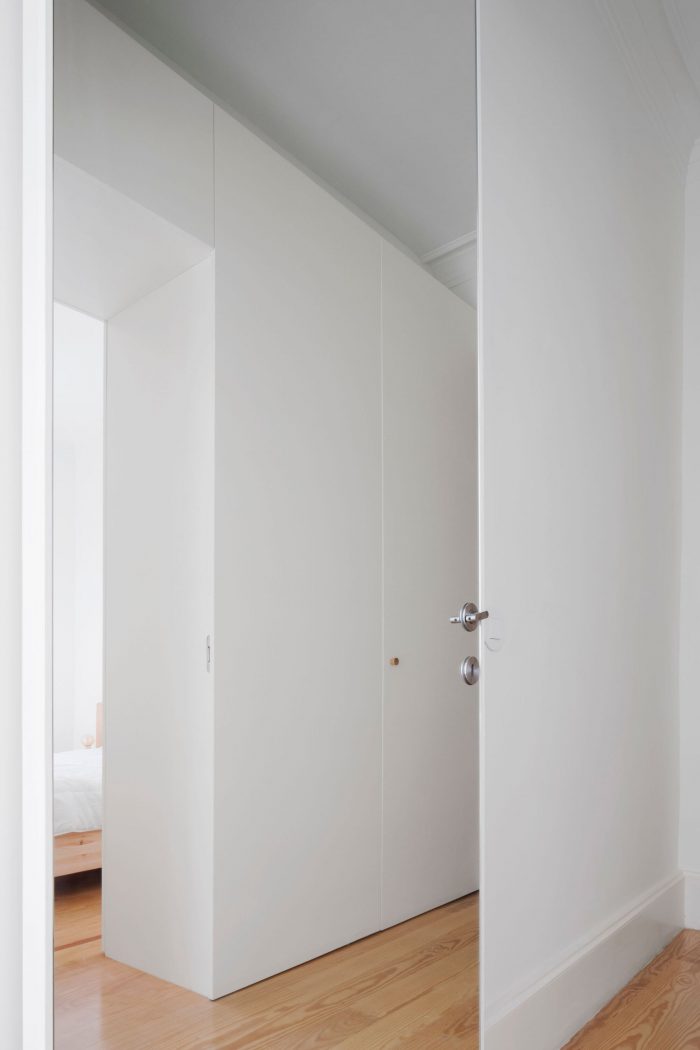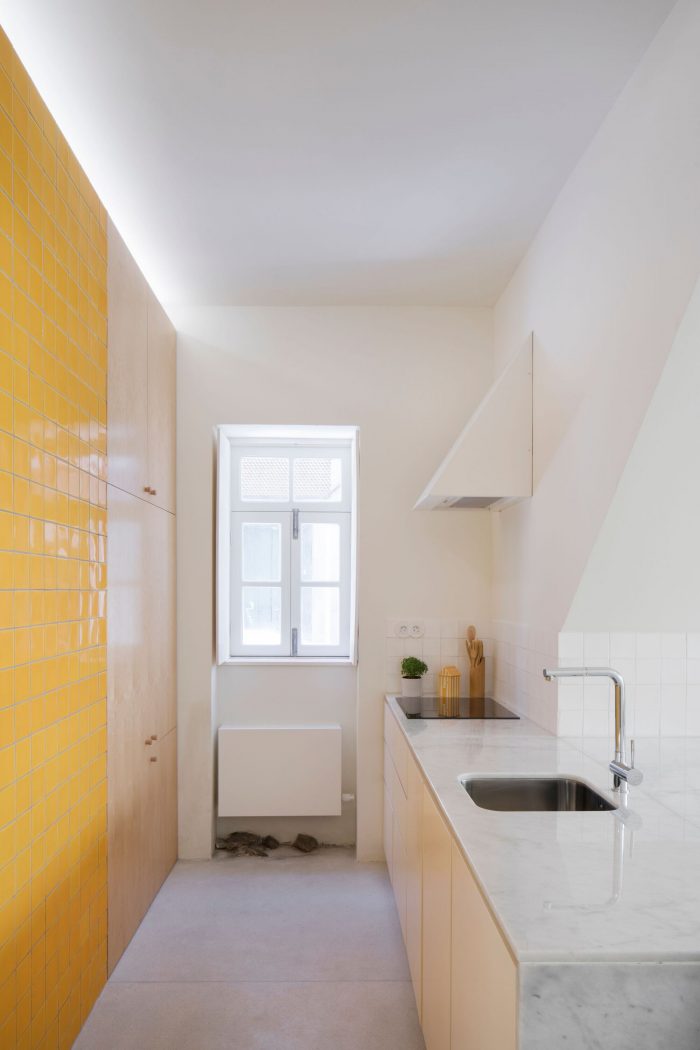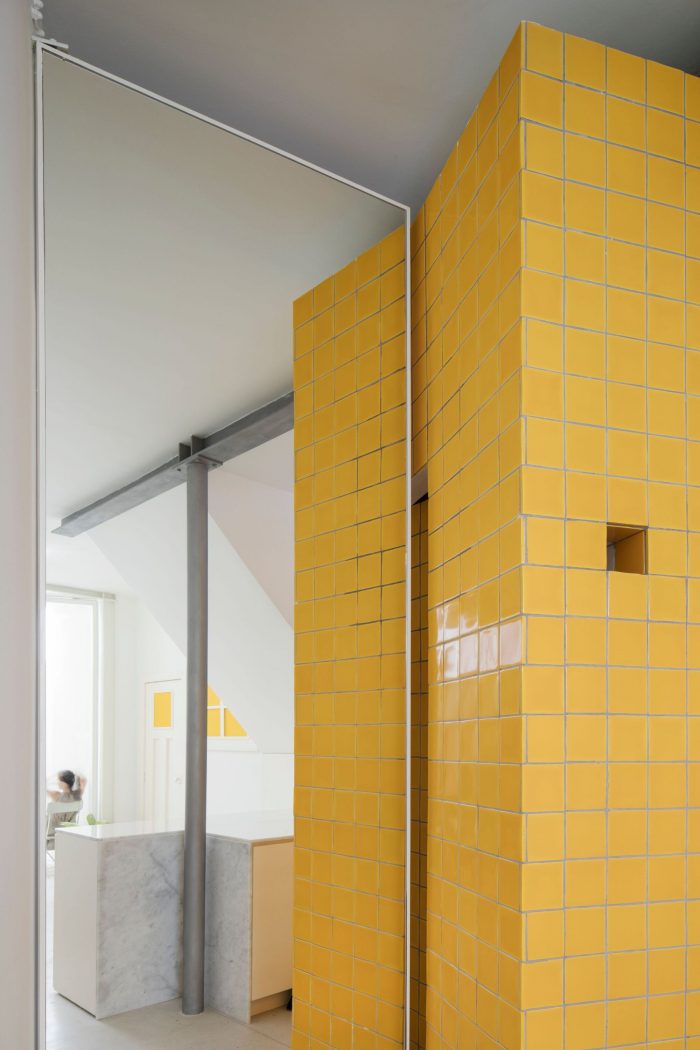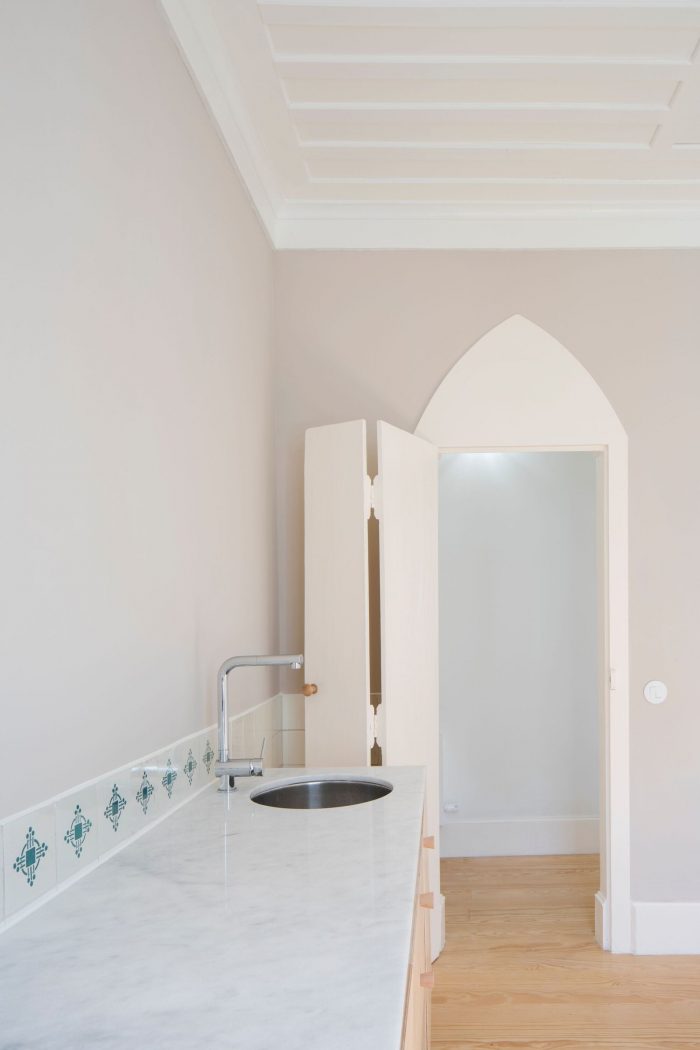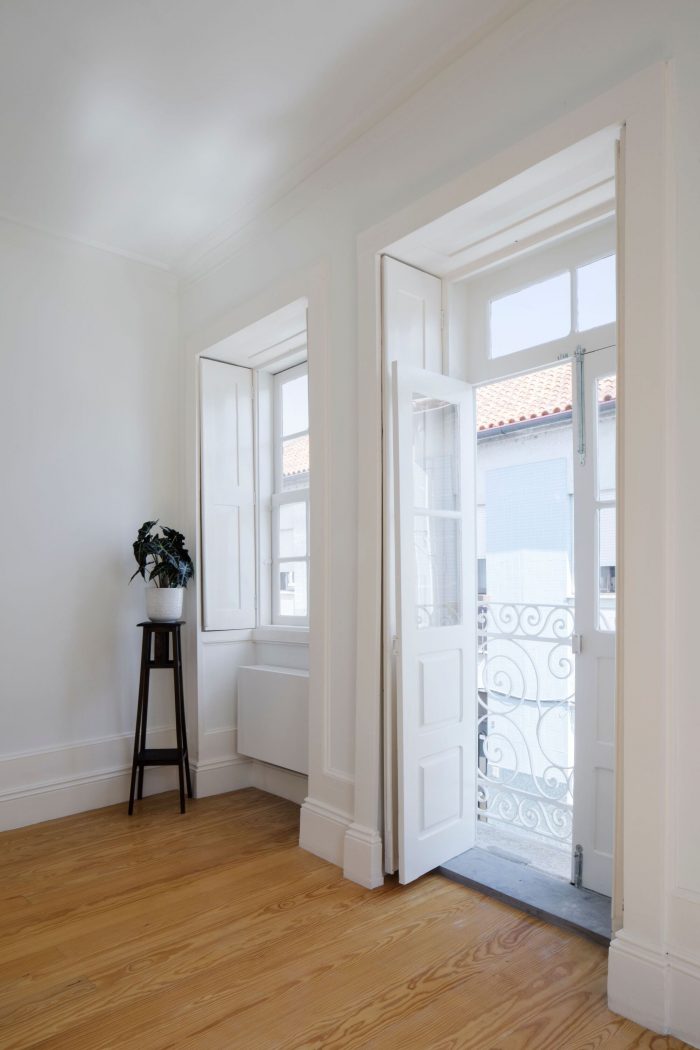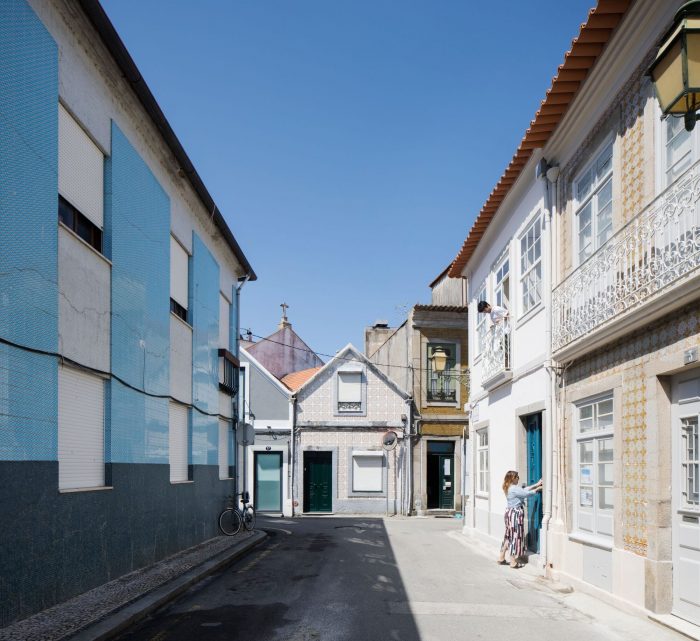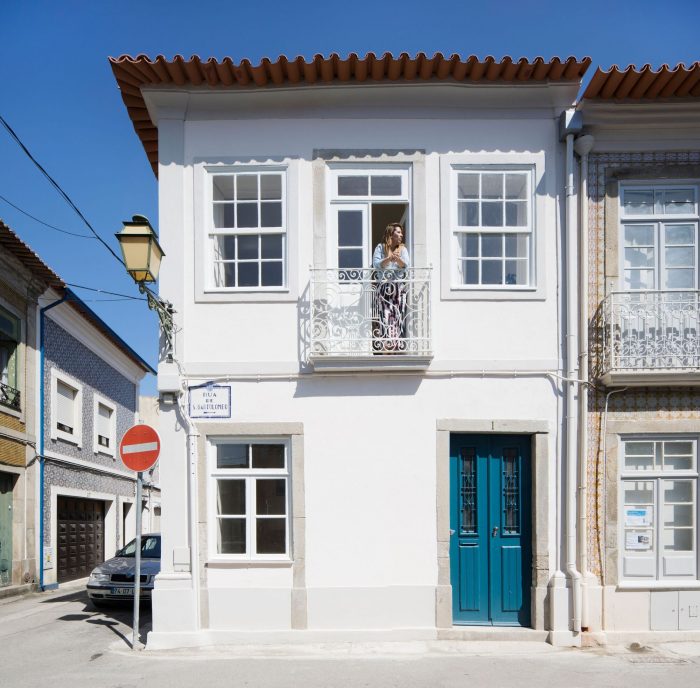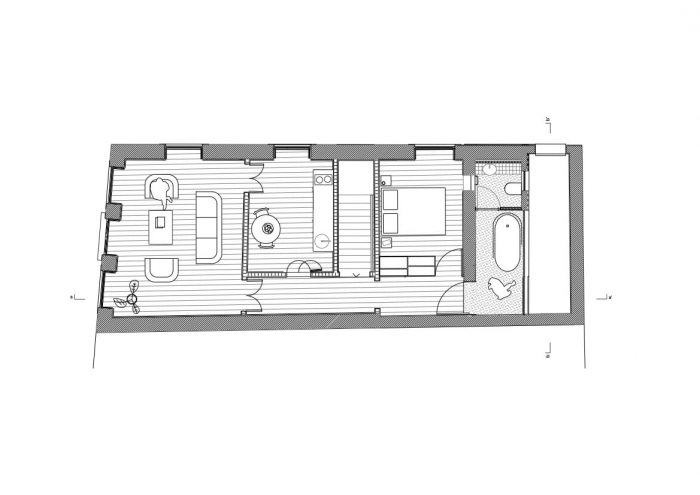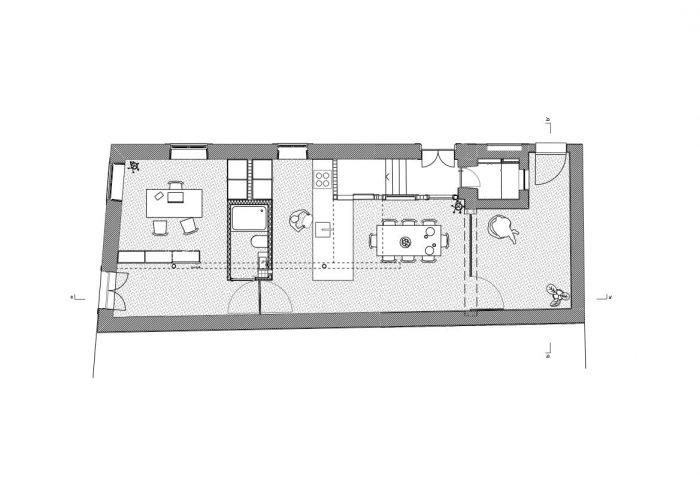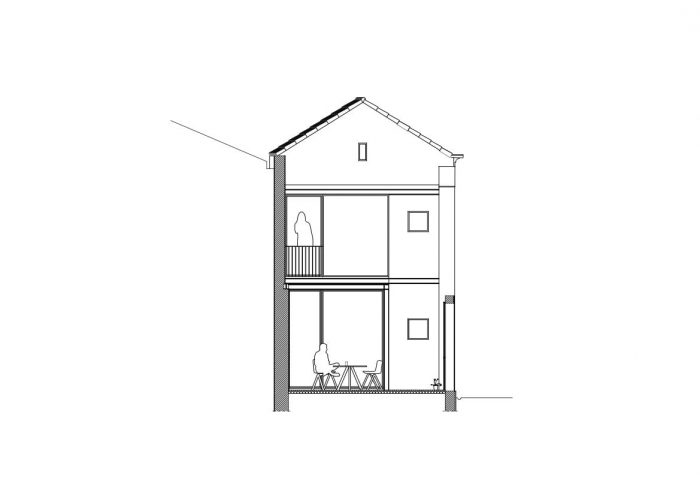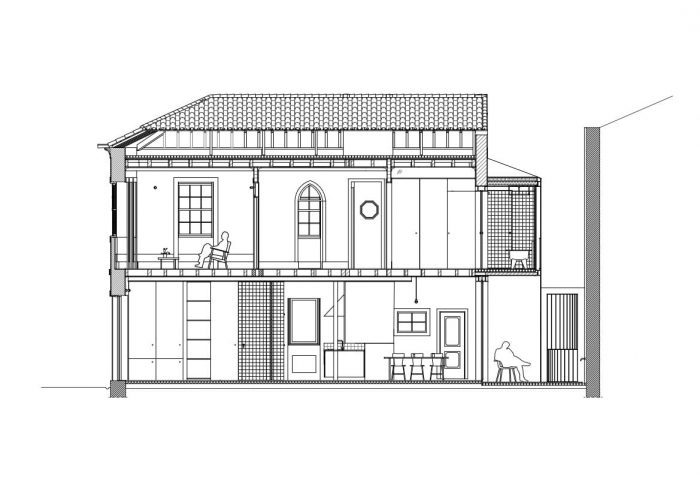贝拉玛之家位于阿威罗古老的渔民区之一,贝拉玛,一个由长而窄的老渔民房子组成的市中心景观,建立在土坯上,涂有当地工业的彩色瓷砖,充满了绿色的陶瓷花盆。
Casa da beiramar is located in one of Aveiro’s ancient fishermen neighborhoods, beira-mar, a downtown landscape of long and narrow old fishermen houses built on adobe, coated by colorful tiles of the local industry and filled with green ceramic flowerpots.
城市的这一部分一直见证着老居民和新居民之间有趣的融合。其中一个新居民假装修复了这个古老的土坯房,预见到了一个进化的计划:在最初阶段,作为两个公寓,然后作为一个房子,在不久的将来,有或没有独立的办公室。
This part of the city has been witnessing an interesting fusion between the old dwellers and the recent inhabitants. One of the new inhabitants pretended to restore this ancient adobe house, foreseeing an evolutive program: on an initial phase, serve as two apartments and then as a house, with or without an independent office, on a near future.
我们把灵活性理解为丰富建筑的使用和老化的一种方式–在一个特定的地方增加和分层的可能性,所以新的占用可以是多重的和变革的。
We understand flexibility as a way to enrich the using and the aging of buildings – a matter of adding and layering possibilities on a specific place, so the new occupation can be multiple and transformative.
利用现有的两个入口,我们能够促进这种灵活性,因为镜面门对于实现和分离新的用途至关重要–从两套公寓,到一栋房子,或业主新的心理医生诊所办公室。
Using the two existent entrances we were able to promote this flexibility, as the mirrored doors became essential to enable and separate the new uses – from two apartments, to a house, or the owner’s new psychologist practice office.
修复工作是按照传统的建筑方法进行的:恢复和加固现有的木墙和土坯墙,赋予现有的地板和墙壁更好的热和声学性能,维护窗户、门和其他结构和装饰元素。主要的干预措施包括清理最近被放置得不好的建筑元素,以及引入两种新材料:钢结构,它利用旧的土坯墙来支撑木结构,允许打开背面的立面;以及彩色的瓷砖–有些是新的,有些是旧的–指出了这个旧建筑的新生命。
The rehabilitation was conducted grasping and adapting traditional building methods: recovering and reinforcing the existing wood and adobe walls, endowing the existing floors and walls with a better thermal and acoustic behaviour, maintaining windows, doors and other structural and ornamental elements. The main intervention consisted in cleaning the constructive elements that had been recently and badly placed, and in introducing of two new materials: the steel structure, which takes advantage of the old adobe walls to support the wood structure, allowing to open the back facade; and the colorful tiles – some new, some old – which point out the new life of this old construction.
在东南面的外墙上,过去几十年间建造的几座建筑占据并扭曲了本应是一个天井的空间。为了收回这个空间,这些非正式的建筑被拆除了,新的枢轴窗建成后,可以完全开放给新的天井。这个介于室内空间和室外的新空间,旨在为独特的生活仪式服务,如夏天吃饭,冬天晚上围着一个室外壁炉。
On the southeast facing facade, several constructions, built during the last decades, had occupied and distorted the space of what should be a former patio. In order to retreat this space, the informal constructions were demolished and the new pivot window built, allows a total opening to the new patio. This new space in-between the indoor space and the outdoors aimed to serve distinct daly life rituals, as summer meals, and winter nights around an outdoor fireplace.
在一楼,与新天井直接相连,建造了一个玻璃阳台,用作洗澡的地方。放在空间的中间,一个白色的帘子包裹着旧的浴缸,在洗澡的亲密时刻和拥挤的Bartomoleu街的开放视野之间创造一个过滤器。这种新的干预旨在研究日常工作中最私密的时刻和户外公共日常生活之间的界限。
On the first floor, in direct connection with the new patio, a glazed balcony was constructed, and used as a place for bathing. Placed in middle of the space, a white curtain that wraps and old bathtub, creates a filter between the intimacy of the bath moment and the open view for the overcrowded Bartomoleu Street. This new intervention aimed to research the limits between one of the most private moments of the quotidian routine and the outdoors public daily life.
最后,新的干预措施和现有的恢复功能之间的混合是两种建筑方式之间的液体融合,一种更普遍,与新居民的新习惯和舒适要求有关,另一种更乡土,与地方、现有的建筑和当地文化有关。
At the end, the mixture between the new intervention and the existent recovered features is a liquid blend between two ways of building, one more universal, related with the new habits and comfort demands of the new inhabitant and other more vernacular, related with the place, the existent building and the local culture.
Architects: Merooficina
Area : 150 m²
Year : 2020
Photographs :Tiago Casanova
Project Team : Catarina Ribeiro, Vitório Leite, Miguel Alonso, Rita Serra e Silva
Engineering : NCREP, Paulo Reis, Pedro Pereira e Bruno Navio
City : Aveiro
Country : Portugal


